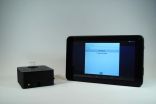Dasabuvir and ombitasvir/paritaprevir/ritonavir: Hint of added benefit in further patients
Data subsequently submitted show advantage also in pretreated hepatitis C patients of genotype 1b without cirrhosis / Extent remains unclear
2015-08-06
(Press-News.org) Dasabuvir (trade name Exviera) and the fixed-dose drug combination ombitasvir/paritaprevir/ritonavir (trade name Viekirax) have been available since January 2015 for the treatment of adults with chronic hepatitis C infection. The German Institute for Quality and Efficiency in Health Care (IQWiG) had examined their added benefit in a dossier assessment completed in April 2015.
In an addendum, the Institute now assessed study data subsequently submitted by the drug manufacturer in the commenting procedure. According to the findings, the results of an indirect comparison show a hint of an added benefit of both drugs also in pretreated patients with genotype 1b infection without cirrhosis. The extent of this added benefit is non-quantifiable.
Differentiated approvals result in a large number of patient groups
Both dasabuvir and ombitasvir/paritaprevir/ritonavir are only approved in combination with further drugs, including dasabuvir plus ombitasvir/paritaprevir/ritonavir. Since the Summaries of Product Characteristics recommend partly different treatment regimens both for these two drugs and for the respective comparator therapies, there are different patient groups for the benefit assessment, which mainly differ in type of virus, pretreatment and stage of disease.
The Federal Joint Committee (G-BA) specified either dual therapy (peginterferon plus ribavirin) or triple therapy, i. e. a combination of a protease inhibitor with peginterferon and ribavirin, as appropriate comparator therapies.
Studies suitable for indirect comparison
In the commenting procedure, the manufacturer now subsequently submitted results of an indirect comparison. This comparison was based on two randomized controlled trials (RCTs): The first study (PEARL II) compared dasabuvir plus ombitasvir/paritaprevir/ritonavir with dasabuvir plus ombitasvir/paritaprevir/ritonavir plus ribavirin. The second study (MALACHITE II) compared the latter combination with triple therapy. Hence dasabuvir plus ombitasvir/paritaprevir/ritonavir plus ribavirin was suitable as a so-called common comparator. Since the studies and their participants were sufficiently similar, the comparison is principally possible and suitable. The results are less informative than in a direct comparison, however.
Advantage in virologic response
This indirect comparison showed a statistically significant difference in favour of dasabuvir plus ombitasvir/paritaprevir/ritonavir in "sustained virologic response" (SVR). A hint of an added benefit can be derived from this for one further group of patients, for which initially this was not possible on the basis of the dossier.
This patient group consists of pretreated patients infected with genotype 1b virus who have not (yet) developed cirrhosis. The extent of this added benefit cannot be quantified, however. It remains unclear in how many patients in whom the virus is no longer detectable, late complications, and liver cancer in particular, can actually be prevented.
Now added benefit for approximately 90% of the patients
In the dossier assessment from May 2015, IQWiG had determined an indication of a non-quantifiable added benefit of dasabuvir and ombitasvir/paritaprevir/ritonavir in a total of three patient groups, which was primarily justified by an advantage in SVR and derived from studies of direct comparisons. These were pretreated and treatment-naive patients with genotype 1a infection and treatment-naive patients with genotype 1b. Pretreated patients with genotype 1b now form the fourth group. The limitation that the patients have not yet developed cirrhosis applies to all four groups.
The data still do not show an advantage for the remaining groups of patients. But these populations are comparably small. Overall, IQWiG now sees an added benefit in approximately 90% of the patients for whom the two drugs are approved.
G-BA decides on the extent of added benefit
The dossier assessment is part of the early benefit assessment according to the Act on the Reform of the Market for Medicinal Products (AMNOG) supervised by the G-BA. After publication of the manufacturer's dossier and the IQWiG dossier assessment, the manufacturer submitted additional information in the commenting procedure. The G-BA subsequently commissioned IQWiG to assess the data subsequently submitted. IQWiG now presents this assessment in the form of an addendum. The G-BA makes a final decision on the extent of added benefit.
INFORMATION:
ELSE PRESS RELEASES FROM THIS DATE:
2015-08-06
Why some planets, like Saturn or Jupiter, have their rings, while others like, the Earth or Mars do not? It turned out that "the size does not matter" -- not only giants as Saturn possess the rings, but even tiny asteroids do: According to the recent discovery of the Spitzer Space Telescope, the remote asteroid Chariklo, which is only 260 km in diameter, also has rings.
A natural answer may be the following: Occasionally, in a far past, some planets had much more material in their vicinity then the other ones. The material was in a form of dust. Dust particles merged ...
2015-08-06
UC Davis study should help guide patients and their oncologists
(SACRAMENTO, Calif.) -- Combing data collected on thousands of California ovarian cancer patients, UC Davis researchers have determined that almost one-third survived at least 10 years after diagnosis.
The unprecedented findings upend the notion that women diagnosed with cancer of the ovary always face a poor chance of survival. In fact, while the study confirmed earlier findings on characteristics associated with ovarian cancer survival -- younger age, earlier stage and lower grade tumors at diagnosis ...
2015-08-06
The dull black plastic of the device on Joshua Pearce's desk belies its usefulness. Pearce picks up the box, which has a switch on the side and a small opening on top. A handful of vials sit in a bag nearby, and each would fit snugly in the opening. The set-up seems generic, even bland, except that it could radically change how we deal with water quality issues.
Pearce, who has a joint appointment as an associate professor of materials science and engineering as well as electrical and computer engineering, runs an open sustainability technology lab at Michigan Technological ...
2015-08-06
COLLEGE STATION - Woody plant encroachment is one of the biggest challenges facing rangelands worldwide, but it consistently has been under-measured and poorly understood, said a Texas A&M AgriLife Research scientist in College Station.
Dr. Matthew Berg, an AgriLife Research postdoctoral research associate in the Texas A&M department of ecosystem and science management, is trying to change both the understanding and measurement with his latest study, which was captured in the July issue of the Rangeland Ecology and Management publication, http://bit.ly/1JK8JhU.
Berg ...
2015-08-06
Accurately forecasting future electricity needs is tricky, with sudden weather changes and other variables impacting projections minute by minute. Errors can have grave repercussions, from blackouts to high market costs. Now, a new forecasting tool that delivers up to a 50-percent increase in accuracy and the potential to save millions in wasted energy costs has been developed by researchers at the Department of Energy's Pacific Northwest National Laboratory.
Performance of the tool, called the Power Model Integrator, was tested against five commonly used forecasting ...
2015-08-06
Fundamental differences between how the brain forms during adolescence have been discovered in children with schizophrenia and their siblings, a new study shows.
The study opens up new avenues for researchers to explore when developing treatment for the illness, which can be hugely debilitating for children.
Researchers from the University of Melbourne and the National Institute of Mental Health in Washington DC used structural brain magnetic resonance imaging (MRI) to map the brains of 109 children with childhood-onset schizophrenia (COS), from ages 12 to 24.
They ...
2015-08-06
The DZD-researchers at Helmholtz Zentrum München and German Diabetes Center Düsseldorf analyzed more than 1.800 blood samples of participants, who joined the German large-scale study KORA*. Using a comprehensive approach, the scientists investigated metabolic products (metabolites) as well as genetics of these participants. They found that the administration of Metformin** in patients suffering from Type 2 Diabetes led to a change in metabolite levels. According to the authors, this was associated with a significantly decreased level of LDL cholesterol***, which ...
2015-08-06
First the scaffold is cracked, then defective parts are removed: Cells repair damaged DNA by a different mechanism than so far assumed, as chemists from Ludwig-Maximilians-Universitaet (LMU) in Munich have shown.
Defects in DNA can cause serious harm to an organism, including cell death or the development of cancer. Efficient repair mechanisms are therefore of vital importance. LMU chemist Professor Christian Ochsenfeld, Chair of Theoretical Chemistry at LMU, and Dr. Keyarash Sadeghian from his group have explained for the first time in detail how a human DNA repair ...
2015-08-06
ARLINGTON HEIGHTS, Ill. (August 6, 2015) - There are times when emergency physicians can't be 100 percent sure a person is suffering from a severe allergic reaction, known as anaphylaxis, and may hesitate to use epinephrine. A new article says when in doubt - administer the epinephrine.
An article in the Annals of Allergy, Asthma and Immunology, the scientific publication of the American College of Allergy, Asthma and Immunology (ACAAI), highlights recommendations from a panel discussion among allergists and emergency physicians. The panel of experts examined barriers ...
2015-08-06
Scientists at the University of Newcastle, UK, have used a combination of small molecules to turn cells isolated from human skin into Schwann cells - the specialised cells that support nerves and play a role in nerve repair. This new method generates large and pure populations of Schwann cells and hence is a promising step forward for the repair of peripheral nerve injuries. This research has just been published in the scientific journal Development at http://dev.biologists.org/
Currently, nerve repair strategies involve taking grafts from patients and using these to ...
LAST 30 PRESS RELEASES:
[Press-News.org] Dasabuvir and ombitasvir/paritaprevir/ritonavir: Hint of added benefit in further patients
Data subsequently submitted show advantage also in pretreated hepatitis C patients of genotype 1b without cirrhosis / Extent remains unclear


